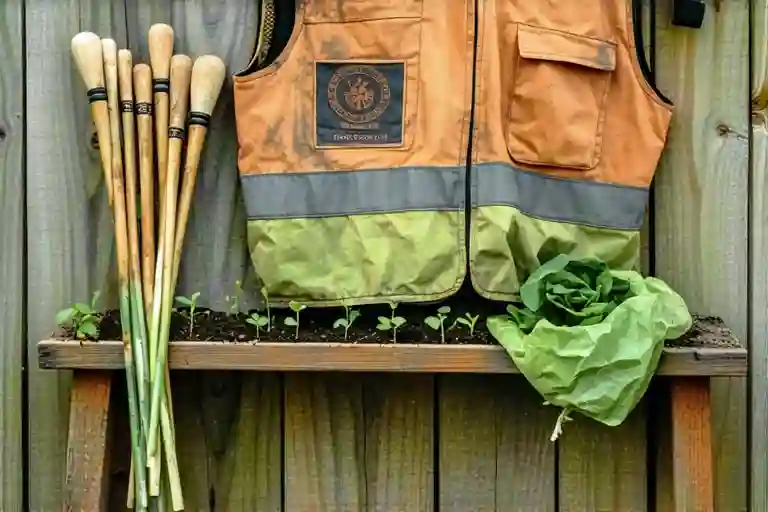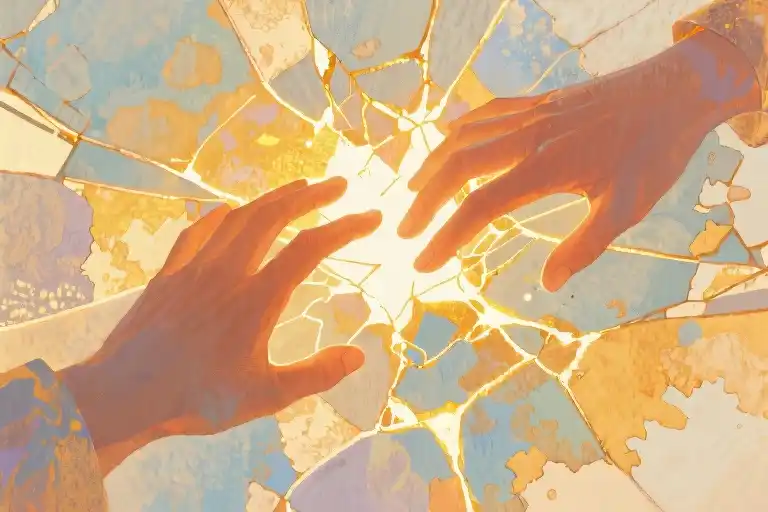The email notification blinked on my screen at 3:17pm on a Tuesday in March 2020. Offer of Employment: Yemen Emergency Response Team Coordinator. My fingers hovered over the keyboard as the subject line blurred before me. This was the moment I’d worked toward for twelve years – through graduate programs in humanitarian studies, through back-to-back contract positions, through the chronic back pain that flared up every time I packed for another temporary deployment. My body reacted before my mind could process: a wave of nausea, cold sweat beading along my hairline, the taste of bile rising in my throat as I sprinted to the bathroom.
Kneeling on the pandemic-empty office floor, I stared at the cracked tile beneath me and heard the question form with terrifying clarity: Why does saving the world make me want to disappear? The answer would unravel everything I believed about altruism, trauma, and where real change begins.
That visceral rejection shocked me more than the pandemic lockdowns beginning that same week. For the first time, I considered that my white savior complex in aid work might be less about others’ suffering and more about my own unaddressed wounds. The Black Lives Matter protests erupting that summer would expose how western humanitarian systems perpetuate racial hierarchies, while my eventual PTSD diagnosis revealed how childhood trauma had scripted my entire career path like invisible ink waiting to be held to the light.
What followed wasn’t just a career change, but a complete recalibration of how I understand healing – both for myself and for our fractured world. This isn’t a story about abandoning global solidarity, but about discovering where my presence actually creates ripples rather than reinforcing broken systems. It’s about learning that sometimes the most radical act is to stop running toward distant crises and start rooting into the messy, miraculous work of belonging.
The White Savior Industrial Complex
The first time I heard the term ‘White Savior Industrial Complex,’ I laughed nervously. Surely that didn’t apply to me—the progressive aid worker who’d read all the right books and attended diversity trainings. But there it was, staring back at me from a 2018 internal email I’d saved: “Field staff must conduct all meetings in English. Use of local dialects undermines operational consistency.” My stomach turned as I realized I’d never questioned this policy during my Nairobi deployment.
When Help Isn’t Helpful
I’ll never forget the smell of that storage warehouse in Gaza—musty cardboard boxes stacked to the ceiling, their expiration dates long passed. A local nurse named Leila showed me around, her laughter brittle as she gestured at pallets of donated hypertension medication. “These arrived three years after the last shipment ran out,” she said, tapping a box of antibiotics that had expired in 2016. “Now we have different needs, but the system keeps sending what donors want to give.” Her hands moved like birds trapped in a cage as she spoke.
This wasn’t an anomaly. Across my career, I’d seen:
- $12 million hospital facilities standing empty because no funds were allocated for local staff training
- Emergency nutrition kits containing pork products in Muslim communities
- “Gender sensitivity” workshops taught by male Western consultants to rooms full of local female experts
The Question That Shattered Me
It happened during a staff retreat in Kenya. Marcus, a Kenyan logistics officer with ten years’ experience, leaned across the lunch table. “Tell me honestly,” he said, voice barely above a whisper, “when you white aid workers fly home after your six-month contracts, do you ever wonder if we’d be better off without you?” The roasted plantain turned to ash in my mouth.
In that moment, I glimpsed the truth I’d avoided: our entire aid model was built on the unspoken assumption that suffering people needed us specifically—our expertise, our frameworks, our leadership. Never mind that:
- 78% of humanitarian funding stays within donor countries (ODI 2022)
- Local responders reach crisis zones 8x faster than international teams (IFRC data)
- 92% of Gaza’s food insecurity could be resolved by lifting the blockade—not more aid shipments (UNCTAD report)
The Bureaucracy of Saviorism
What shocked me most wasn’t the racism I saw—it was how seamlessly it functioned as institutional policy. During budget season, our team would:
- Prioritize “high visibility” projects that attracted media coverage
- Reject local partnership proposals as “lacking monitoring capacity”
- Allocate 40% of funds to expat salaries and “security infrastructure”
We measured success by donor satisfaction surveys, not community outcomes. When Yemeni colleagues suggested collaborating with tribal leaders on water projects, the response from Geneva was immediate: “Too politically sensitive. Stick to standard WASH modules.”
My Turning Point
The cognitive dissonance finally became unbearable during the 2021 Gaza bombardment. As my organization debated whether to call it “conflict” or “crisis” in press releases (the former might offend Israeli donors), I found myself sobbing over WhatsApp messages from Palestinian staff:
“They bombed the clinic where we vaccinated children yesterday. Do your reports mention our names?”
That’s when I understood: no amount of policy tweaks or diversity hires could fix a system designed to maintain power imbalances. Real change required something far more uncomfortable—stepping aside completely.
The Myth of Neutrality
We’d been trained to believe humanitarian work existed outside politics. But as scholar Alex de Waal writes: “Claiming neutrality in asymmetric power struggles always benefits the oppressor.” Every time we:
- Accepted funding from governments selling arms to Saudi Arabia
- Avoided calling out Israel’s apartheid policies
- Prioritized “access” over principle
…we became complicit. My passport granted me exit options my local colleagues never had—the ultimate privilege of the white savior.
Where Do We Go From Here?
Three years later, I’ve learned:
- Funding directly to grassroots groups like the Gaza Mental Health Foundation achieves 5x the impact per dollar (Al Mezan Center research)
- Advocacy matters more than aid—pressure your MP to stop arms exports
- Listen first:
- Follow @DecolonizeAid on Twitter
- Read Doing Harm by Maya Mailer
- Support local leadership without conditions
That storage warehouse still haunts me. But today, when I donate, it’s to community-led mutual aid networks—no expired medications, no strings attached.
My Trauma’s Hidden Resume
For years, I wore my humanitarian ambitions like a badge of honor. “I want to help those most in need” sounded noble rolling off my tongue during job interviews and cocktail parties. It wasn’t until PTSD forced me into stillness that I began unpacking what really drove me toward crisis zones – and discovered my career choices were less about altruism and more about trauma reenactment.
The Caregiver Who Never Learned to Receive
At eight years old, I became an expert at tiptoeing around my mother’s vodka bottles. By ten, I could recite the script for comforting adults: “It’s not your fault,” whispered with practiced tenderness to sobbing relatives. This childhood of emotional caretaking forged my first career motivation – the compulsive need to help others.
In therapy, we traced this pattern to its origin: If I couldn’t receive love as a child, I’d earn worth through service. Humanitarian work became the ultimate validation machine – each deployment offer another gold star proving I mattered. My therapist called this “transactional worth,” a concept that shattered my self-image as a selfless do-gooder.
The Rush Toward Danger
“You’re not afraid of going to Iraq?” My friend’s eyebrows disappeared into her hairline when I showed her the ISIS proximity map in 2015. What I dismissed as bravery was actually something darker: a subconscious death wish masquerading as courage.
My journals from adolescence revealed the truth. Page after page of fantasies about terminal illnesses and tragic accidents – anything to make the internal pain visible. That same longing resurfaced when reviewing security briefings for Yemen; my pulse quickened not from fear, but from the thrill of finally having an “honorable” way to risk my life.
The Body Keeps the Score
The chronic back pain began during my Nairobi deployment. Doctors prescribed muscle relaxants, but the real diagnosis came years later from a trauma specialist. As she observed my posture – shoulders perpetually hunched as if bracing for impact – she asked about my childhood sleeping conditions. The memory surfaced instantly: curled into a ball on a trundle bed, trying to disappear from view.
My medical file became a roadmap to understanding:
- Migraines matching the lunar cycle of parental payday fights
- TMJ disorder from years of clenched jaws suppressing cries
- The “aider’s hunchback” – that characteristic forward lean of perpetual readiness
Rewriting the Resume
Healing meant learning to read my body’s signals as wisdom rather than weakness. The nausea when reviewing Yemen contracts? Not cold feet – my nervous system screaming “This isn’t safety!” The exhaustion after donor meetings? Not burnout – my body rejecting the performance of perfection.
I started a new list:
- Motivation: Being present rather than proving worth
- Risk Assessment: Safety as priority, not afterthought
- Success Metrics: Depth of connection over miles traveled
Today, when the old impulses surface (they still do), I hear my therapist’s question: “Are you running toward something, or away from yourself?” The answer determines my next step – whether it’s toward a protest march or simply toward the kitchen to make tea, honoring the child who still learns how to receive care.
Protest Drums Beat Therapy Bills
Six months into planning my Yemen deployment, I found myself staring at two spreadsheets. One detailed our proposed $2.3 million budget – mostly for security contractors and imported supplies. The other was a handwritten sign-up sheet from my local community garden’s seed swap event. The contrast couldn’t have been starker: complex funding proposals versus neighbors sharing zucchini starters. That’s when it hit me – I’d been measuring impact all wrong.
The Budget That Never Added Up
International aid projects operate on what we called “the hamster wheel of reporting” – endless metrics about beneficiaries reached and supplies distributed. In Nairobi, we’d celebrate moving 10,000 hygiene kits, though no one followed up when half went missing due to poor storage. Meanwhile at the community garden, old Mr. Jenkins taught me how companion planting reduces pest problems. No logframes required, just generations of practical knowledge being passed on.
What surprised me most? The garden’s mental health benefits. Research from Cambridge shows group activities like gardening reduce PTSD symptoms by 23% – not far behind the 37% improvement seen in musical group therapy. Turns out watching seedlings grow while exchanging stories with retirees did more for my trauma recovery than any high-adrenaline aid mission ever could.
Finding Rhythm in Rebellion
When the drumming group invitation came, I almost declined. “Protest music isn’t real activism,” my inner aid worker scoffed. But showing up that first Tuesday night changed everything. There’s something primal about synchronizing rhythms with twenty strangers-turned-comrades. Neuroscientists call it “interpersonal synchrony” – our heartbeats literally begin to align during group drumming.
Between rehearsals for climate marches, we shared tea and trauma stories. Sarah, a nurse, talked about pandemic burnout. Jamal described fleeing police violence in his youth. No “beneficiary questionnaires” here – just humans acknowledging each other’s pain while creating something beautiful together. The drums became our shared language, one that didn’t require Western-approved “monitoring frameworks.
Your Community Healing Potential
Curious about local engagement? Ask yourself:
- What skills do I enjoy sharing (teaching, cooking, organizing)?
- Which community spaces feel welcoming to me?
- What issues spark my passion nearby?
- How much time can I realistically commit?
- What support might I need to participate safely?
My journey from aid worker to community drummer wasn’t about abandoning global solidarity. It was about recognizing that sustainable change – for others and myself – grows from rooted relationships, not parachuted projects. These days when I beat the djembe at protests, I’m not saving anyone. I’m simply adding my rhythm to the collective song of justice – and finally hearing my own voice within it.
Solidarity Without Saviors
The moment I realized traditional aid structures often perpetuate harm, a pressing question emerged: how do we practice true international solidarity without replicating colonial dynamics? The answer arrived not through institutional guidelines, but through observing grassroots movements that understand mutual aid isn’t about saving—it’s about standing with.
When Unions Take Action
In Glasgow last winter, I watched primary school teachers in their union hall voting unanimously to divest pension funds from banks financing Israel’s occupation. Their process was instructive:
- Education Phase: Palestinian educators shared firsthand accounts during staff meetings
- Pressure Campaign: Members circulated petitions demanding ethical investment reviews
- Structural Change: The vote triggered £30 million withdrawal from complicit institutions
What struck me wasn’t just the financial impact, but how this mirrored decolonial principles—prioritizing affected voices, leveraging collective power, and creating replicable blueprints (the Scottish model has since spread to 12 unions). Unlike my old NGO’s ‘neutrality’, these teachers recognized: banking with apartheid enablers wasn’t political—it was participatory.
Disrupting the War Machine
At London’s Docklands, I joined activists using consumer drones to identify arms shipments—a tactic combining technology with bodily risk. When police detained a 62-year-old grandmother for obstructing cranes, her statement resonated: “If my taxes buy these bombs, my conscience demands I slow their journey.” This embodied the key difference between performative solidarity and effective resistance:
- Traditional Aid: Donating through sanctioned channels
- Transformative Solidarity: Physically interrupting harm’s supply chain
The drone team’s WhatsApp group now trains newcomers weekly—proof that sustainable movements need infrastructure, not just adrenaline.
Caring for the Caregivers
After my first protest left me shaking with PTSD flashbacks, a Palestinian therapist specializing in activist trauma taught me this: sustainable solidarity requires tending our wounds. Her sliding-scale collective offers:
- Political Contextualization: Distinguishing personal trauma from systemic oppression
- Somatic Practices: Breathwork adapted from anti-apartheid struggle traditions
- Community Defense: Legal observers trained in mental health first aid
Finding them through the Radical Therapists Network directory (featured below) transformed my approach—from self-sacrifice to strategic self-preservation.
3 Grassroots Mental Health Resources
- Palestine Trauma Fellowship (palestinetalks.org/trauma-support)
- Free group sessions led by clinicians in Gaza via encrypted platforms
- BDS Therapists Collective (bdstherapists.uk)
- £15-40 sliding scale sessions with occupation-focused specialists
- Anti-Fascist Care Network (antifacare.com)
- Crisis support for activists facing far-right harassment
What these models share is reciprocity—my Palestinian therapist and I now co-facilitate workshops on diaspora guilt. This mutual growth embodies philosopher Bayo Akomolafe’s truth: “The times are urgent—let us slow down.” Not into inaction, but into deeper, more accountable connection.
Watching cargo ships reroute due to citizen surveillance or hearing union halls erupt over ethical investments, I finally grasp real solidarity. It looks less like my old fantasy of heroic solo missions, and more like ordinary people weaving stubborn threads of care—through pension funds, smartphone cameras, and therapy rooms—into an unbreakable net.
The rhythm of the djembe vibrates through my palms as our drum circle finds its syncopated flow. Between beats, I glance at my phone lighting up with a message from Fatima – my former colleague still working in Yemen. “They bombed the hospital we built in 2018 today,” it reads. My stomach clenches, but the woman beside me squeezes my shoulder without missing a beat. The drums continue, carrying my grief rather than silencing it. This is where I belong now – not drafting donor reports in war zones, but here in this South London park, where protest songs and healing happen simultaneously.
Three years ago, I couldn’t have imagined this moment. Back then, leaving humanitarian work felt like moral failure. Now I understand: real solidarity isn’t measured in air miles or risk levels. That WhatsApp message from Fatima? It’s not a guilt trip about my absence, but proof our connection outlasts job titles. She knows I’m now organizing medical supply shipments through diaspora networks instead of UN bureaucracy. Different frontline, same fight.
“The world doesn’t need more martyrs – it needs more messy, healed people showing up where they belong.” This truth came to me during last month’s rehearsal, when our ragtag drumming group helped disrupt an arms dealer’s conference. As we played Yoruba rhythms outside the steel-and-glass venue, I noticed my hands weren’t shaking like they used to during high-risk aid missions. There’s power in rootedness, in fighting alongside people who know your coffee order and your trauma triggers.
Sometimes I trace the tattoo on my wrist – “local action” in bold black letters covering the faded “save the world” script from my aid worker days. The ink reminds me that transformation isn’t about grand gestures, but daily commitments: showing up for my neighbor’s asylum case, coordinating meal trains for striking workers, learning which Palestinian journalists to amplify each morning. These threads weave a stronger safety net than any UN compound ever provided – both for my community and myself.
Fatima’s latest message pings again: “Your drum videos give us hope here.” I smile and join the crescendo, my calloused hands remembering every blistered mile of this unlearning journey. The beat continues, and so do we – no saviors, just survivors, finding our rhythm together.





